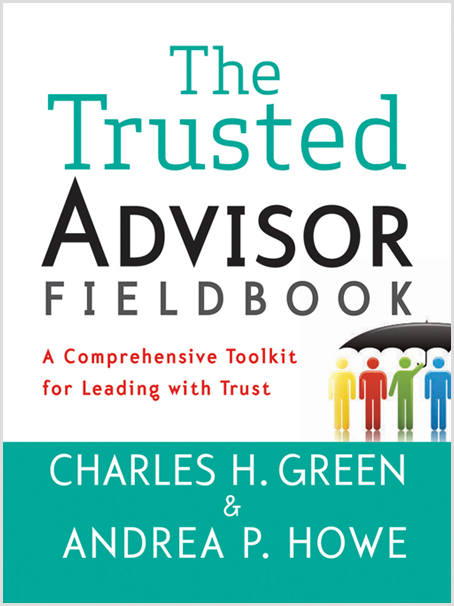This post is part of our Weekly Tips series.

It’s an age-old challenge in the consulting industry: how to help the deliverers—the ones who actually labor side-by-side with the client—to develop more business.
The biggest barrier is a mental barrier. I mean, let’s be honest, “selling” is usually perceived as a less-than-meritorious endeavor—whether we’re selling a product or service for a fee, or selling an idea. And delivery people usually falter because they’re just not sure how to approach opportunities in an un-smarmy way.
Selling done rightly is part of your professional obligation to serve the client, plain and simple.
Here are five specific behaviors that help a well-meaning deliverer live by this mindset:
- Ask permission. Telling a client about new opportunities to improve their business is a hundred times easier when you have set the expectation early on that you’re going to do it. At project kickoff, this could sound like this:
“Aria, we’re going to be working together closely for four months. We are totally committed to achieving the results we’ve defined in our project plan. Along the way, we might see opportunities to improve your business that fall outside the scope of our work. Would it be OK to bring those to your attention?”
Then when the time comes, it’s natural to start with, “Aria, remember when we said…”
- Listen, listen, and listen some more. Listening is one of the five key skills of trusted advisorship. When you make it your job to be routinely and regularly curious about what’s going on in the client’s world, opportunities for more work often present themselves—no “ask” required
- Sell by doing. Sales gets a bad rap in part because sellers do way too much talking. Selling by doing, or samples selling, gives your client the actual experience of working with you. They get a taste of what it might be like to go in a new or different direction, without obligation or pressure to move forward.
- Sell the right solution, not your solution. The purpose of traditional selling is to help others buy from you; the purpose of trust-based selling is to help others make the best decision for them right now. Delivery folk should unreservedly explore all options with the client—not just your organization’s solution. This frees them of their concerns about having a company agenda.
- Use caveats. Sometimes we feel things even when we know we “shouldn’t”—like feeling smarmy when it’s time to talk about being of greater service. Suggestion: say something about that, like, “Geez, at the risk of coming across as salesy…” That’s a caveat, and it dispels the yuck that you’re feeling. It also communicates that you care about how your message is received, and smooths over what could be an awkward shift for the client (although truthfully is more likely awkward for you).
Taking the “sell” out of selling leads to greater value and better results. Isn’t that the ultimate delivery?
Make It Real
This week, take a good look at your perceptions about “selling” (services or ideas). Fill in the following blanks … honestly:
Words that come to mind immediately when I think of selling are _________________.
When it comes to selling, I wish ________.
If only selling didn’t have to be __________.
Fundamentally, selling requires _________.
What do you learn? Where are there opportunities to re-script your answers?
Learn More

Read more about selling by doing, from our friends at Trusted Advisor Associates, or brush up on cross-selling best practices in Chapter 17 of The Trusted Advisor Fieldbook.
Andrea Howe
Latest posts by Andrea Howe (see all)
- Why choosing silence in the face of awkwardness can be a trust tragedy - March 21, 2024
- What NOT to do when you think you’re being ghosted - February 21, 2024
- Reprise: If you’ve resolved to have better client relationships this year, great, now ditch your resolution - January 2, 2024
